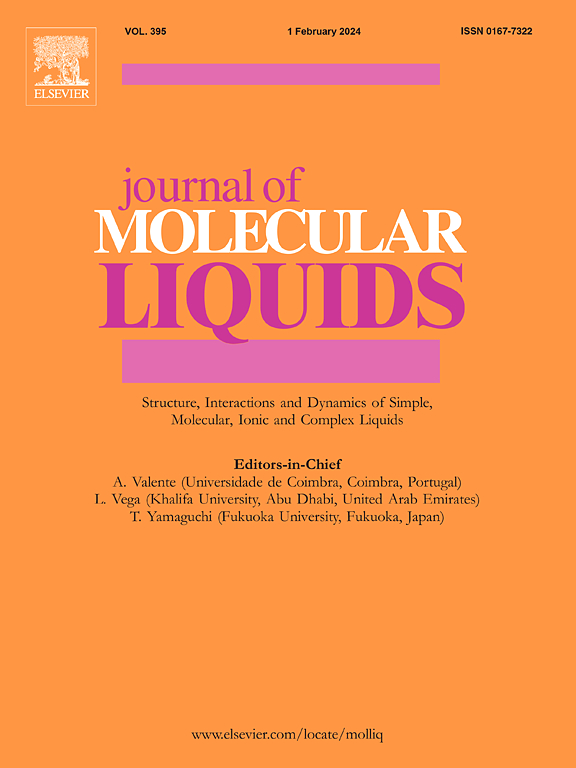Understanding the role of confinement in the behavior of ionic liquid–organic solvent mixtures in slit carbon micropores: Insights from molecular dynamics
IF 5.3
2区 化学
Q2 CHEMISTRY, PHYSICAL
引用次数: 0
Abstract
In this study, we used molecular dynamics simulations to investigate the effects of diluting [EMIM][NTf2] with DMSO on the behavior of the electrolyte within negatively charged slit-like micropores. Our results demonstrate clear differences in electrolyte composition between confined and bulk phase. Increasing the DMSO content leads to higher concentrations of counterions within the pores, particularly in pores that are 0.7 and 0.9 nm wide. Oscillations in the disjoining pressure, excess charge in the center of the pore, and fluctuations in the number of hydrogen bonds occur as the pore size increases due to abrupt structural changes of the electrolyte inside the pores. Namely, the electrolyte arrangement within the pores adopts a layered structure, with a single layer in pores up to 0.9 nm wide and additional cation–anion layer forming with every 0.4 nm increase in width. This study offers insights into how confinement impacts the orientation and conformation of ions and solvent molecules within micropores. In particular, the distribution of cis- and trans-conformers of the [NTf2]− anions varies depending on the size of the pore.
求助全文
约1分钟内获得全文
求助全文
来源期刊

Journal of Molecular Liquids
化学-物理:原子、分子和化学物理
CiteScore
10.30
自引率
16.70%
发文量
2597
审稿时长
78 days
期刊介绍:
The journal includes papers in the following areas:
– Simple organic liquids and mixtures
– Ionic liquids
– Surfactant solutions (including micelles and vesicles) and liquid interfaces
– Colloidal solutions and nanoparticles
– Thermotropic and lyotropic liquid crystals
– Ferrofluids
– Water, aqueous solutions and other hydrogen-bonded liquids
– Lubricants, polymer solutions and melts
– Molten metals and salts
– Phase transitions and critical phenomena in liquids and confined fluids
– Self assembly in complex liquids.– Biomolecules in solution
The emphasis is on the molecular (or microscopic) understanding of particular liquids or liquid systems, especially concerning structure, dynamics and intermolecular forces. The experimental techniques used may include:
– Conventional spectroscopy (mid-IR and far-IR, Raman, NMR, etc.)
– Non-linear optics and time resolved spectroscopy (psec, fsec, asec, ISRS, etc.)
– Light scattering (Rayleigh, Brillouin, PCS, etc.)
– Dielectric relaxation
– X-ray and neutron scattering and diffraction.
Experimental studies, computer simulations (MD or MC) and analytical theory will be considered for publication; papers just reporting experimental results that do not contribute to the understanding of the fundamentals of molecular and ionic liquids will not be accepted. Only papers of a non-routine nature and advancing the field will be considered for publication.
 求助内容:
求助内容: 应助结果提醒方式:
应助结果提醒方式:


